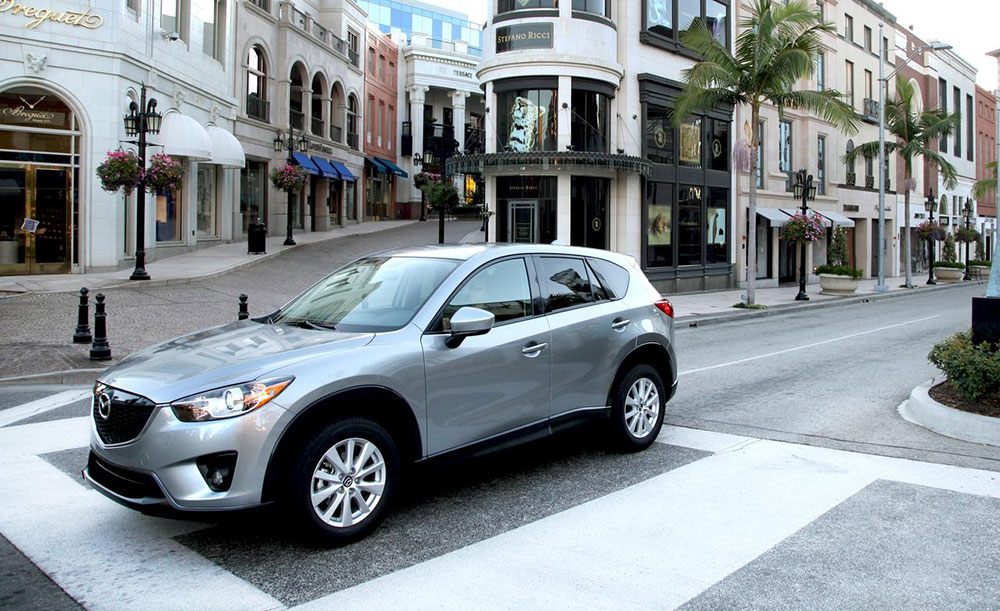Mazda: 100,000 CX-5s Within Reach; Smaller CUV StudiedMazda: 100,000 CX-5s Within Reach; Smaller CUV Studied
Hitting the 100,000-mark with the CX-5 would put the automaker in rarefied company, joining others with small CUVs reaching or surpassing the figure, including the Toyota RAV4, Nissan Rogue, Ford Escape and Honda CR-V.
February 18, 2014

CHICAGO – Mazda sold 79,544 CX-5 compact CUVs in the U.S. last year, up 83.6% from 2012, and a senior official with the automaker believes there’s even more upside for the vehicle.
“I think we’re capable of doing (100,000 per year), I really do,” Jim O’Sullivan, CEO-Mazda North American Operations, tells WardsAuto here.
If Mazda can achieve the 6-digit mark, it would give the automaker a second 100,000-plus model in the U.S., after the Mazda3. Mazda sold 104,713 copies of the compact car in 2013.
Just over four years ago, the Japanese automaker delivered 207,767 units in all of 2009 in the U.S.
Hitting the 100,000-mark with the CX-5 would put Mazda in rarefied company, joining others with small CUVs hitting or surpassing the figure, including the Toyota RAV4, Nissan Rogue, Ford Escape and Honda CR-V, the latter the best-seller in the segment with 303,904 units delivered in 2013.
O’Sullivan believes Mazda can outperform last year’s CX-5 tally due to an increase in brand awareness among U.S. car buyers; a reduction in fleet volume; a recovering U.S. industry projected to sell more than 16 million new cars and light trucks this year; and the automaker’s new assembly plant in Mexico.
While the Salamanca plant, which opened in January, doesn’t assemble the CX-5, it is a second production source of the Mazda3. With less Mazda3 capacity needed in Japan, the automaker can build more CX-5s there, O’Sullivan says.
Another reason for optimism is the projected growth forecast for smaller CUVs.
“The two (hot) segments (in 2014) are going to be C-car and small crossovers, and obviously we play really well in that space,” O’Sullivan says.
He says C-car buyers are not moving up into C/D-size cars as much as before, but switching over to a C-size CUV instead.
“We’re seeing really good, organic growth from our current-generation Mazda3 customers that have bought maybe (the old compact) Protege, then Mazda3, (and) now (are) moving into crossovers and the CX-5,” he says, adding the old CX-7, which the CX-5 replaced, was too big to have mass appeal.
Meanwhile, O’Sullivan says Mazda could go smaller still with another CUV.
A CX-3 is something the automaker “is always looking at,” he says. “For us, we think there’s growth in small crossovers.”
WardsAuto forecasts the CX-3 will go into production in July 2015 at Salamanca, joining other B-segment CUVs such as the Nissan Juke and an upcoming model from Honda based on the subcompact Fit platform going on sale later this year.
Mazda’s other CUV, the large CX-9, is undergoing a full redesign, expected to launch in late 2015 as a ’16 model.
“We’re working on…expanding the relevance of that,” O’Sullivan says, noting it, too, will receive Mazda’s Skyactiv suite of technologies that improve fuel economy and performance.
Volume of 24,628 in 2012 put the CX-9 well below the Large CUV segment leaders, notably the Ford Edge. The Edge, which shares a platform with the current CX-9, sold 129,109 units last year.
You May Also Like